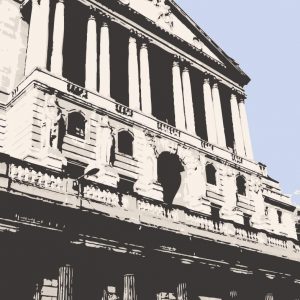
According to the latest statistics from the Bank of England (BoE), which collates data from 340 regulated lenders and administrators, buy-to-let mortgages made up 11.8 per cent of gross mortgage lending and owner-occupiers came to 88.2 per cent.
In the owner-occupier segment, remortgages made up 28.1 per cent, which was up 9.7 per cent on the same period last year and the highest share of remortgages since Q2 2020.
House purchase accounted for 53 per cent of owner-occupier gross mortgage lending, which was the lowest observed since Q2 2020.
Also, within the owner-occupier segment first-time buyers remained roughly static at 23.3 per cent, but home movers fell by 9.8 per cent to 29.7 per cent compared to the same period last year.
Further advances and other mortgages accounted for 71 per cent of gross advances overall.
The report added that nearly three quarters, around 71 per cent, of gross mortgage lending had interest rates which were less than two per cent above the bank rate.
This is up 6.5 per cent than a year ago and the highest since Q3 2020. This was driven by the bank rate increase in December as opposed to changes in mortgage rates, the BoE explained.
It added that the value of new mortgage commitments, which is lending agreed to be advanced in the coming months, was £77.3bn, which was two per cent down on the prior quarter and nearly 12 per cent lower than the peak of £87.7bn in the same period last year.
However, the BoE said this showed a return to pre-pandemic levels, as the four-quarter average at this time was £71.3bn.
Higher LTV and LTI ratio lending
Gross mortgage lending with interest rates two to three per cent above the bank rate fell to 19 per cent from 27.2 per cent, and those with interest rates of three per cent or more fell by nearly six per cent to 9.8 per cent.
Advances at 90 per cent loan to value (LTV) or more came to 4.2 per cent, which it said was the highest observed since Q2 2020 and three per cent higher than a year earlier. The share of mortgage advances over 95 per cent LTV came to 0.2 per cent, which is slightly down on the prior quarter.
Loans above 75 per cent LTV accounted for 36.7 per cent of mortgage advances, which were down 3.3 per cent on the same period last year.
The proportion of lending to borrowers with a high loan to income (LTI) ratio also grew, now accounting for around half of gross mortgage lending.
Borrowers on a single income with an LTI ratio of four or above accounted for 11.8 per cent of gross mortgage lending, and borrowers with a joint income who had an LTI of three or above made up 38.4 per cent of gross mortgage lending.
The value of outstanding balances with arrears fell by 2.1 per cent on the quarter to £13.bn, which is the lowest since Q4 2019.
Total loan balances with arrears also fell from 0.86 per cent to 0.84 per cent, which BoE said was the lowest since recording began in 2007.
Market showing signs of ‘calming’
Brokers said the latest figures from the BoE showed the market was showing signs of dampening compared to the busy pace of the last 18 months.
Gareth Lewis, commercial director of property lender MT Finance, said: “The BoE figures suggest a cooling of the market in the fourth quarter of last year, which is not surprising given the frenetic pace of activity over the previous 18 months.
“That pace was not sustainable and with double-digit house-price growth pricing first-time buyers even further out of the market, a more reasonable pace, similar to pre-pandemic levels, is welcome.”
He added that the year had got off to a “busy start” and there was a “huge amount of positivity” among buyers, and January and February had been busy months for lending.
Lewis added: “It will be interesting to see what happens over the coming couple of months with regard to purchase transactions. We are likely to see a further increase in base rate and with the bigger lenders starting to raise their mortgage rates, borrowing costs are set to edge up across the board.
“This may see people clamour to get deals done sooner rather than later, focusing minds on low rates while they are still available, and mean a continuation of these positive figures.”
Mark Harris, chief executive of SPF Private Clients, agreed that the figures showed the market was “calming down” and starting to return to pre-pandemic levels.
However, he added: “Of course, these figures are historic and as we head towards the end of the first quarter of this year, mortgage pricing remains incredibly dynamic, with lenders rapidly changing once they find themselves top dog. Not only is the average pricing of two and five-year fixes increasing but product choice is falling.
“Borrowers must move quickly to secure a rate even though expectations of an interest rate rise at the Bank’s next meeting are being pared back given the Russia/Ukraine conflict and its direct and indirect effects on the UK economy.”
Jeremy Leaf, north London estate agent and a former RICS residential chairman, said the numbers felt like the “calm before the storm” and said its office noticed the Ukraine crisis was slowing enquiries due to its impact on household finances and energy prices..
He said: “Although demand for houses remains strong, this additional squeeze combined with continuing lack of supply is likely to contribute to an easing of price growth as many sit on their hands, hopefully for a short rather than extended period.”















